Before ploughing into my half-remembered escapades of hunt-sabbing in the dismal coalfield country of South Yorkshire I need to revisit the first part of this essay where I blindly meandered into crust punk folklore. My friend Chris Low, and his impressive social circle of bonafide ex musicians from the outer edges of music subcultures kindly promoted the blog (thanks Chris) and provoked a very civilised Facebook post discussion of what is, what isn’t, and what could be with regard to music scenes linking up and carrying looks.
I acknowledged crust as a kind of cross-pollination at the musical level with heavy metal, but it also evident that the look borrowed from heavy metal also with the tattered and cut-off garments augmented with numerous patches. Hardcore scenes like the infamous Hackney Hell Crew and the Bristol ‘ciderpunk’ scene took this look, sound and way of life to an entropic extreme. However, it wasn’t necessarily a wholesale move or progression of anarcho-punk. Some from anarcho-punk circles moved into this scene, whilst it is also attracted many second-wave punks (GBH, Exploited, etc) and I guess also a few stray outliers from the metal scene. In many ways, it saw the end of a classic anarcho-punk (non)look, as Chris stated in his introduction to his post.
The general thrust of discussion was that anarcho-punk clothing was determined by utility and poverty – cheap and durable things worn as long as possible such they are repaired multiple times or that rips and worn patches didn’t necessitate sartorial ‘shame’ and throwing away. Of course, there were voices stating that anarcho-punk was proudly without any subcultural dress codes, but I’d amicably argue against that all day. Whilst not necessarily adumbrating a subcultural scene or associated movement, style inevitably takes root to some degree amongst a significant proportion.
An incredible photograph of the time shows band members from anarcho-punk collectives Chumbawamba, Flux of Pink Indians, D&V and KUKL (Bjork’s first band). It’s like a summit meeting of people wanting a total upheaval of society. There’s a number of ‘styles’ evident, with a proto-crust dreadlock look on 3-or-4 males, and the favoured anarcho-punk mullet that was a mainstay of the hunt-sabbing crowd. Clothing is deliberately plain, oversized, misshapen, worn out, and adorned with badges. You can almost smell the aroma of Sosmix butties and Barleycup.
Also in the discussion were a few more snippets of information about anarcho-punk clothing that had passed me by, and what did jog my memory was the mention of wearing Rucanor boots as a cheap (and presumably veggie-friendly) form of footwear. I’d totally forgotten about these, even though I saw out the latter part of the 80s wearing them. It’s not a good look, and the boots quickly wore away on the soles so it felt like walking on ice most of the time. Here I am with my two dogs (fed on ‘Happidog’ vegetarian food much to their annoyance) and I’m moving away from an anarcho-punk ‘country’ look to wearing outdoor gear. But I’m getting ahead of myself.
So, let’s take up the trail again…
Stepping back to the early 1980s anarcho-punk scene and my own experience of it. Animal rights was to the fore in this scene, personified through diet, clothing, consumables and targeted activism. Again, this was something quite new to me, having had a working-class background where these things tended to rarely surface. I was bought up on cheap meats and recall flasks of soup made from trotters that I took to the swimming baths. In the early days of anarcho-punk the position of being aware of, sympathetic to, and angry about animal welfare was inseparable from the subculture, like the bond between a mod and scooter.
At a wider level of the specifics of how we interact between species, there was a related but at times unspoken torsion in the scene that hinged on an understanding of the role of the city and the (often naïve and idealistic) fetishizing of the rural. So, for example, there were the ‘Stop the City’ marches (with ‘the city’ sometimes being a metonym for the finance industry, and sometimes being just the city, and quite often a wider synecdoche for the brutality of modern progress) and a desire to live on the open road and attend pagan events like solstice festivals at stone circles. Records like Flux of Pink Indian’s ‘Neu Smell’ ep really exemplified this confusion between (evil) city and mis-applied idyllic status of country life with its affable bumpkins. But still a great punk record.
Hunt-sabbing brought these confusions into a focus of sorts. It was a big part of the anarcho-punk scene, and I got involved at various points in the 80s. We sabbed the local hunts around South Yorkshire – a strange area of poverty-stricken ex-coalfields (the miners’ strike was underway and entrenched as we sabbed) and enclaves of aristocracy like the Fitzwilliam Estate. There were animal rights versus class struggle politics, with the hunt also seen as a condensed pantomime of stratified society – the upper classes on horseback, the working-class terrier men, and the supporters from all walks of life. There was naivety of the countryside, as anyone who has tried to rear chickens in a free-range capacity will know about the wiliness and cruelty of foxes. We were brought up to fear foxes, as the cunning bastards finished off the gingerbread man and came for the little red hen.
The hunt-sabs, a rag-tag bunch of anarcho-punk types, didn’t fit into any vein of rural affinity never mind sympathy; the hunters, the terrier men, the spectators and the coppers policing the occasion all hated the hunt-sabs. Shot by all sides. Probably my worst moment was going to a hunt to find that they had hired the local rugby club (whose match that weekend was postponed) to come along and kick seven shades of crap out of the scruffy hunt-sabs, which they gladly and effectively did. There’s probably an enduring rugby song dedicated to the day, sung in the showers at Castleford and Pontefract.
At the same time, in the argument about being told that (as a scruffy punk from the city) I’d never understand country ways and the need to control the fox population, I witnessed on several times a hindered captivity-bred fox being unceremoniously dumped out of a sack in an out-of-sight spot to allow the upper-class hunters to make a kill. I’m not sure how that comes under pest control. Check out the lyrics of anarcho-punk band Conflict’s ‘Berkshire Cunt’ for an impassioned tirade of emotion – I used to play this in the house before going on the sab as a motivational exercise.
As this is about clothing and subcultures I will talk a little about the look of hunt-sabbing as it evolved within the latent anarcho-punk and fledgling crust looks as a kind of badge of activism. Anarcho-punks and hunt-sabs would argue that such a discussion is meaningless and disingenuous, but I would argue that there is always some material and idealist manifestation of a look and style. The society of the spectacle pervades every crevice.
Against a more music-oriented affiliation, hunt-sabs adopted country clothing and a colourway of sage green, swapping their distressed army clothes for Barbour jackets. Crust-heavy-metal adornments were put on hold, and there was an osmotic process of anarcho-punks absorbing this weird toff clothing. These Barbour jackets had been marketed purely towards the practical country-dweller or worker, but in 1980 they made the speculative leap into general fashion and so acted as a kind of sartorial midwife to the Sloane and ‘hooray Henry’ subculture. This was not a subculture in the sense of my use of the concept throughout these essays, but more a case of signalling youthful wealth, ostentation and a sense of entitlement and superiority – the bane of anarchist groups like Class War. In that regard, Sloane was a subculture – just one I felt abhorrent towards.
And so, anarcho-punks and hunt-sabs wearing this uniform was part fitting into the rural scene, part practical, part a piss-take détournement, and maybe even a little bit of confirming the original (monocentric) fashion theories of Thorstein Veblen and Georg Simmel regarding rebelling against class differentiation and trickle-down.
Every hunt-sab meeting involved fermenting a huge canister of scent to throw the hounds off the trail. This was more distinctively perfumed than pungent, in a patchouli oil sense, and so it gained a unique (subcultural) connection to being a hunt-sab that – after spilling it on your clothes - permeated the shared spaces of squats and benefit gigs to mingle with the aroma of homemade hummus that came from one of those frightening pressure cookers that nozzle-sprayed a jet of liquid chick pea vapour around the kitchen. You now had a look and a smell that defined you as an anarcho-punk hunt-sab, a kind of action hero for good causes.
Other rules of engagement followed. For example, photography was a strict no-no since every anarchist was convinced they were the ultimate threat to the state and that every other anarchist was a potential mole. And you had to be careful with your packing-up… that moment of scornful staring and glaring that could befall a young punk newbie whose mum had kindly made him a CHEESE sandwich was brutally crushing. I remember a mind-numbingly crushing conversation about the ingredients of piccalilli as we ventured across the Pennines for a ‘joint hit’ on a Lancashire hunt.
As an act of self-deprecating honesty (what Foucault calls the practice of parrhesia) with regard to my superficial engaging of subcultures – embracing the looks and nuanced meanings for little more than a surface effect – I have an abiding memory of this era. On top of the all the recollections of fights, near scrapes, slinging insults, bloody messes, antics with glue, tipping sugar in fuel tanks, minor victories, mud, explosive profusions of swear words back and forth, boring hours sat in the back of a van, more boring hours in broken down vans and occasionally the physical exertions of the hunt, the thing that sticks most clearly in my memory involved a scene at a another joint meeting – a common event where different hunt-sab groups met up to jointly target a hunt.
Our nominal ‘leader’ from the Sheffield group looked a bit like Brigadier Lethbridge-Stewart with his army smarts and neat haircut. Very un-punk and very un-anarcho. He favoured a Land Rover when it was a small turnout, but we generally had a hired Transit van that gathered the bedraggled troops at a ridiculously early hour every Saturday at Sheffield train station. We often met an old man from Doncaster called Dennis who was a longstanding anti-hunt activist from a past era. He attended in a Reliant Robin and I spent a few afternoons with him. He warmed a can of baked beans in the engine.
On this particular day our Sheffield van met others, including a small group from Lincoln who arrived in their own battered Land Rover. I vividly recall the palpable collective gasp from our motley crew (generally slightly worse for wear from a late-night Friday) as the three Lincoln hunt-sabs made their choreographed appearance as the rear doors of their vehicle opened. They were pristine and box-fresh, resplendent in Barbour jackets with matching long hair combining a mini-mullet and floppy asymmetric fringe (the hunt-sab look), stunningly coloured in bright henna hair dye which was radiant in the winter sunshine. It was surreal – more like a foppish pop band (Duran Duran or Gene Loves Jezebel) emerging from the stage doors to admiring fans and flashbulbs. Or an advert for shampoo in a post-punk parallel universe. It oozed the popstar cool of Mick Jagger captured in Richard Hamilton’s famous image Swingeing London 67(f). I thought, that’s how to do hunt-sabbing - with style.
Some anarcho-punk sources and ideas for gifts:
Two great books by the aforementioned Chris Low and Greg Bull / Mickey ‘Penguin’
Anarcho-punk trump cards by the Radical Poster Collective
A great interview by original Flux of Pink Indians Colin ‘Colsk’ Latter can be listened to here
Contemporary anarcho-punk-inspired music by Bad Breeding click here
A good book on anarcho-punk as discourse here
A project site here





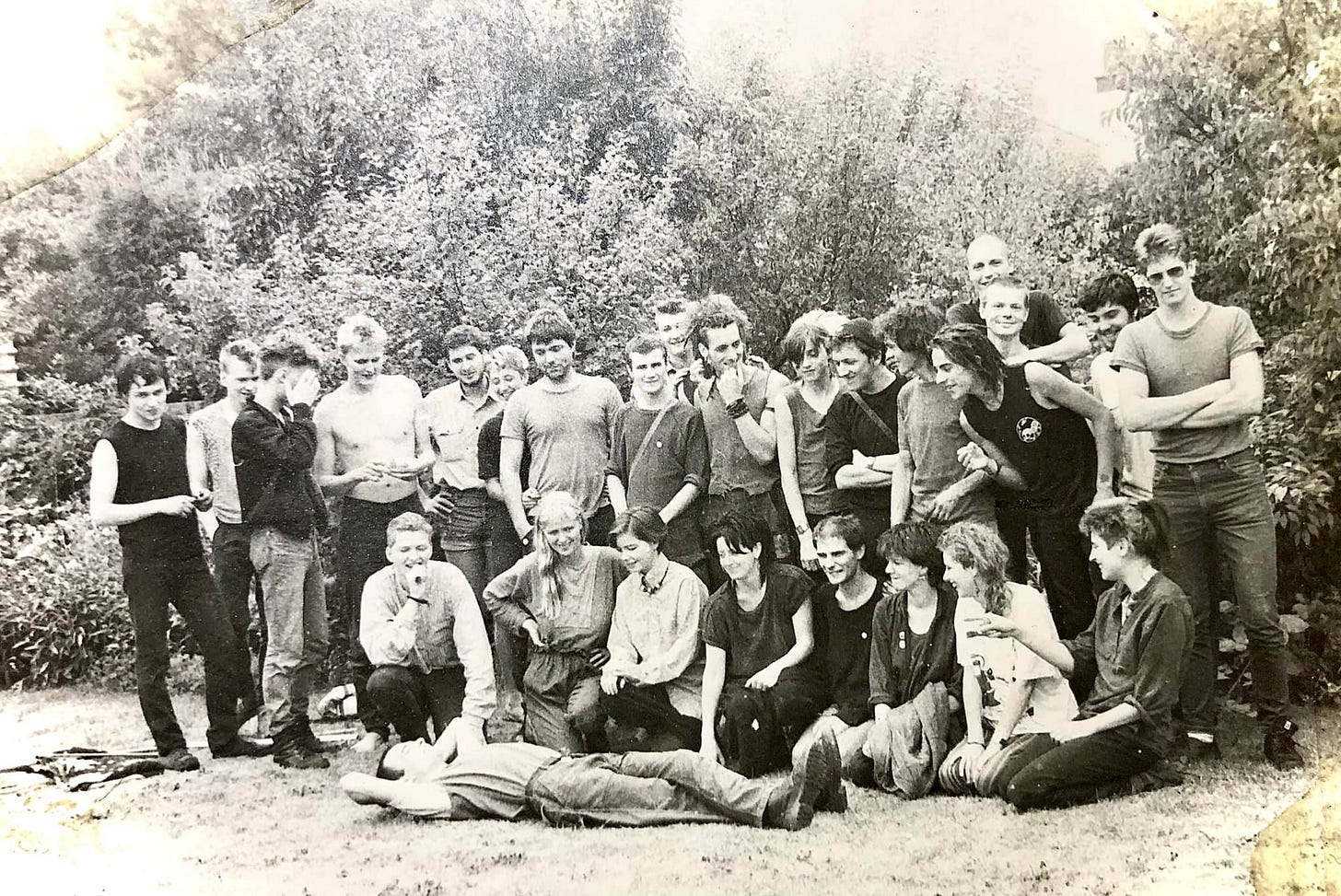
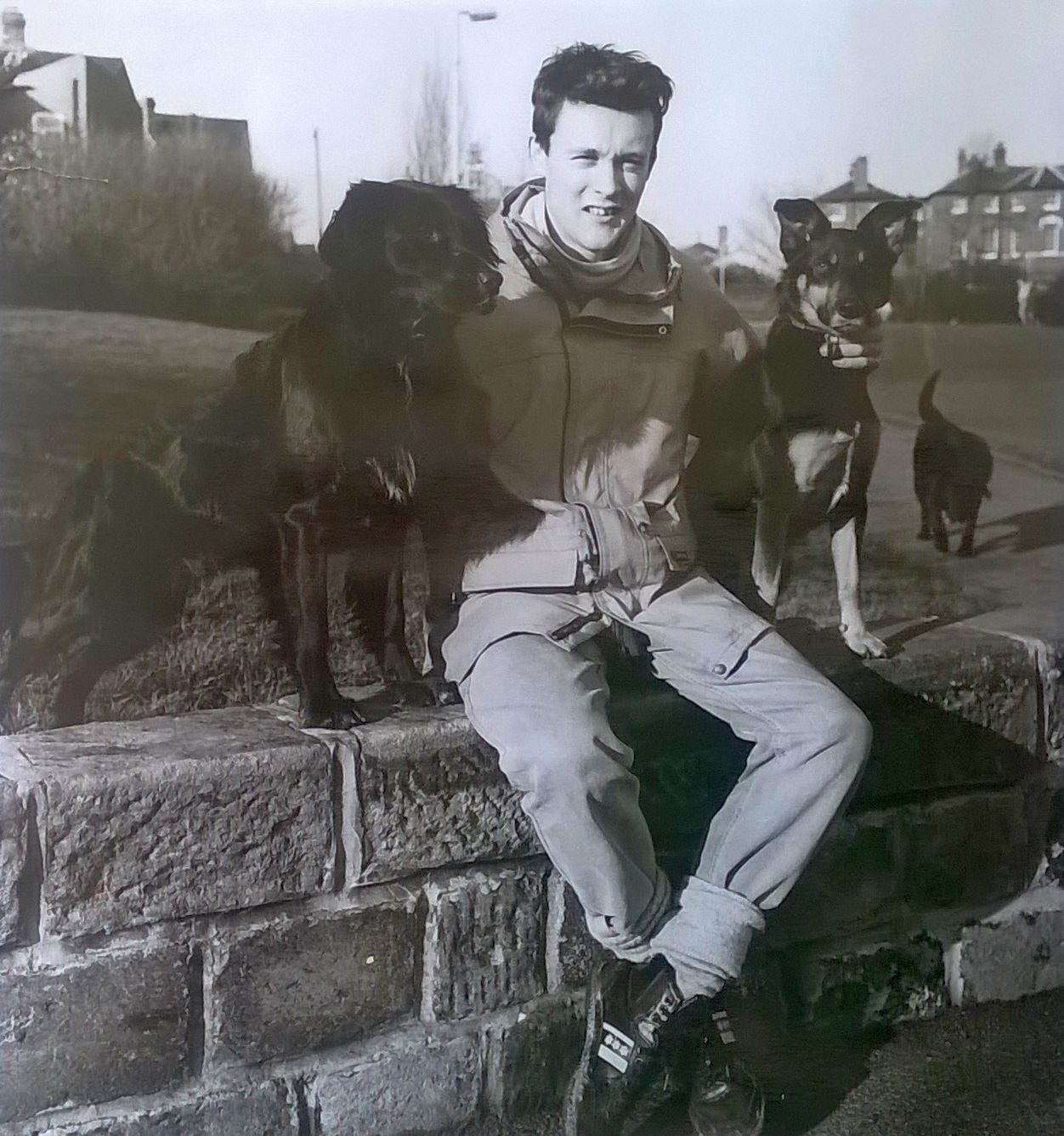
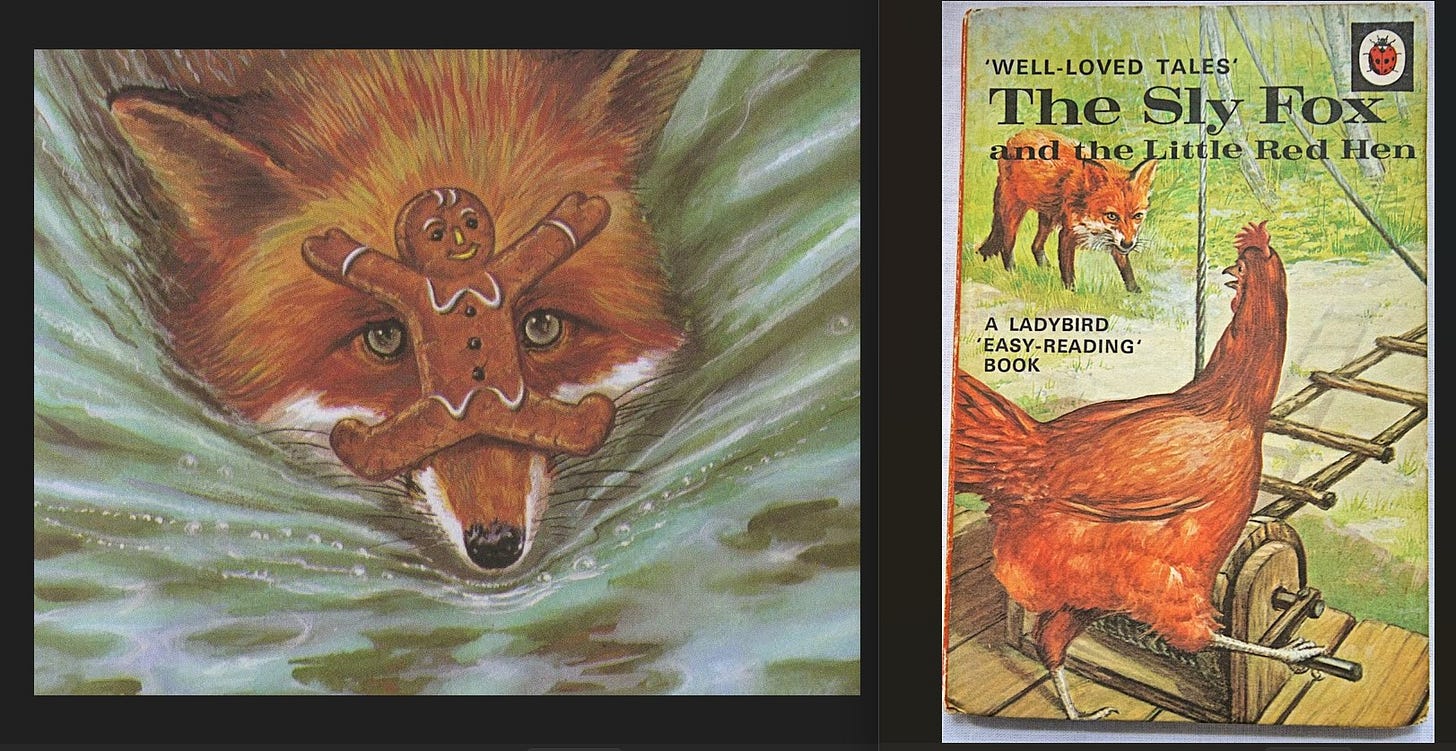
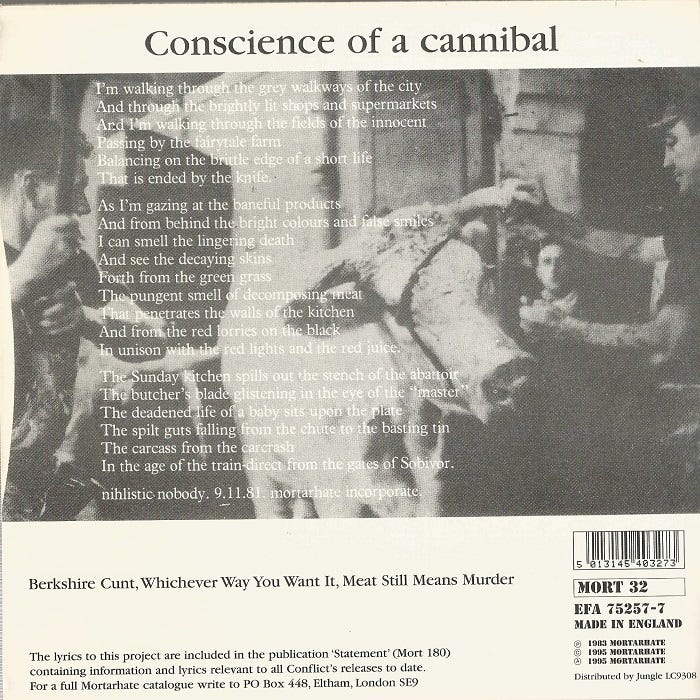
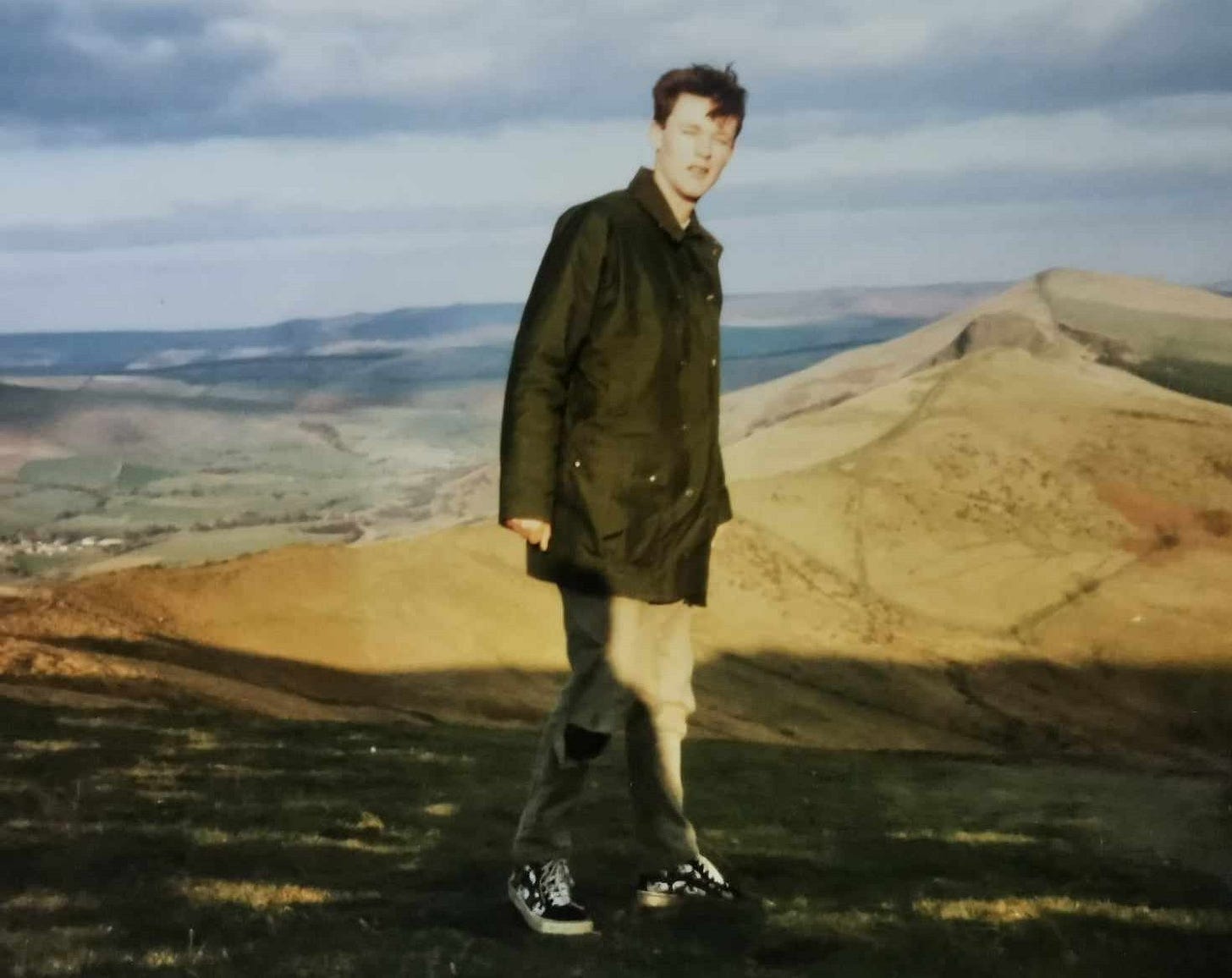
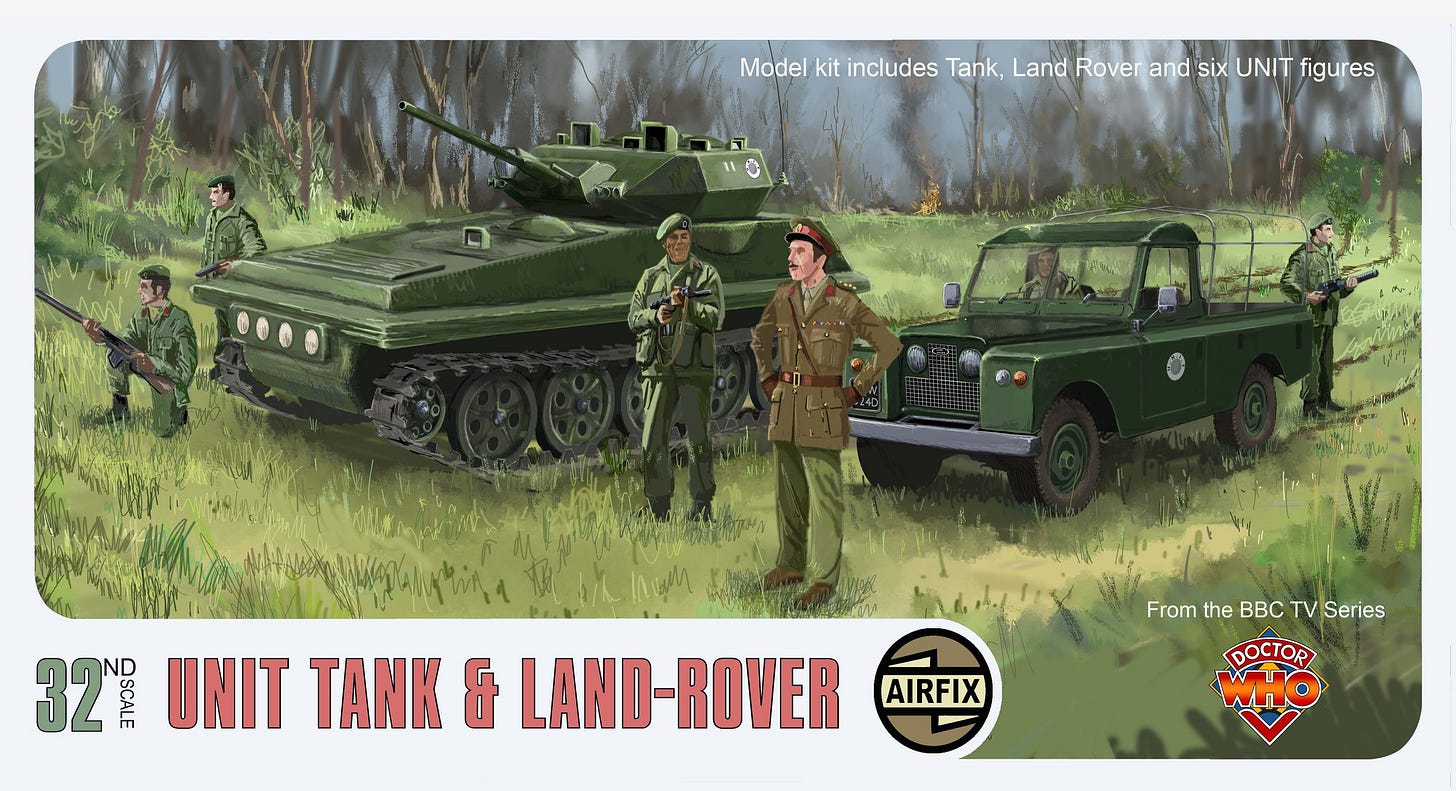
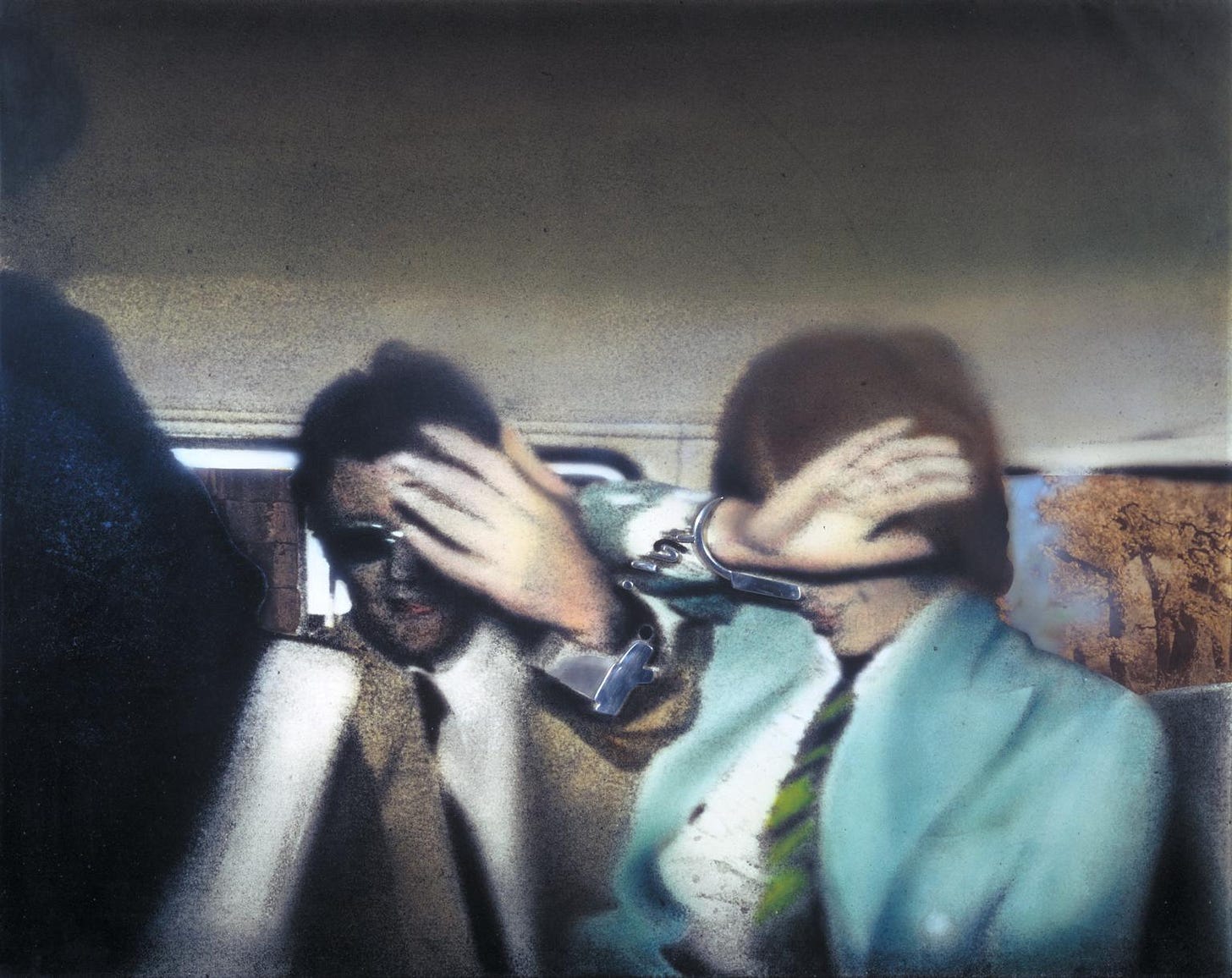
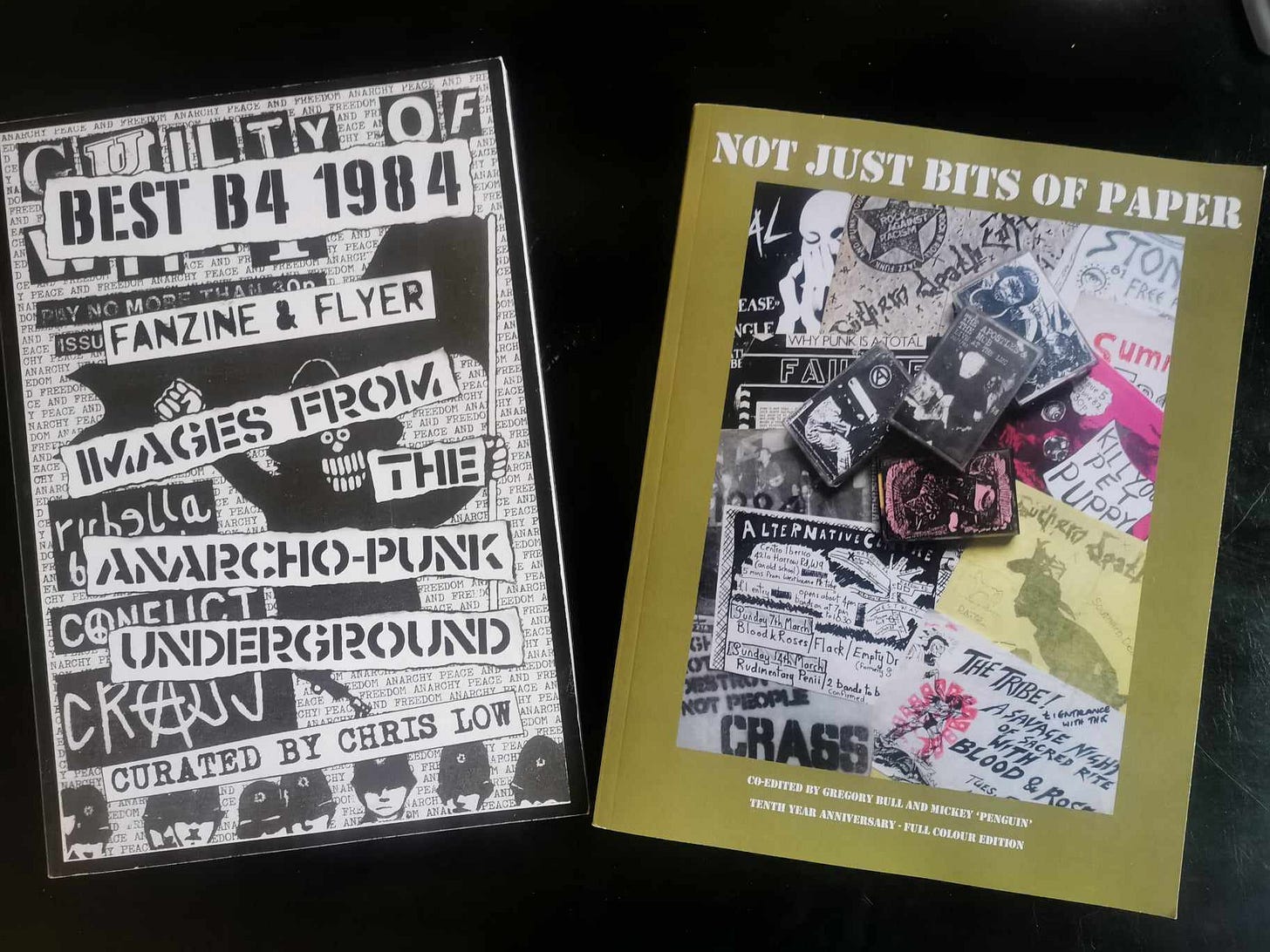
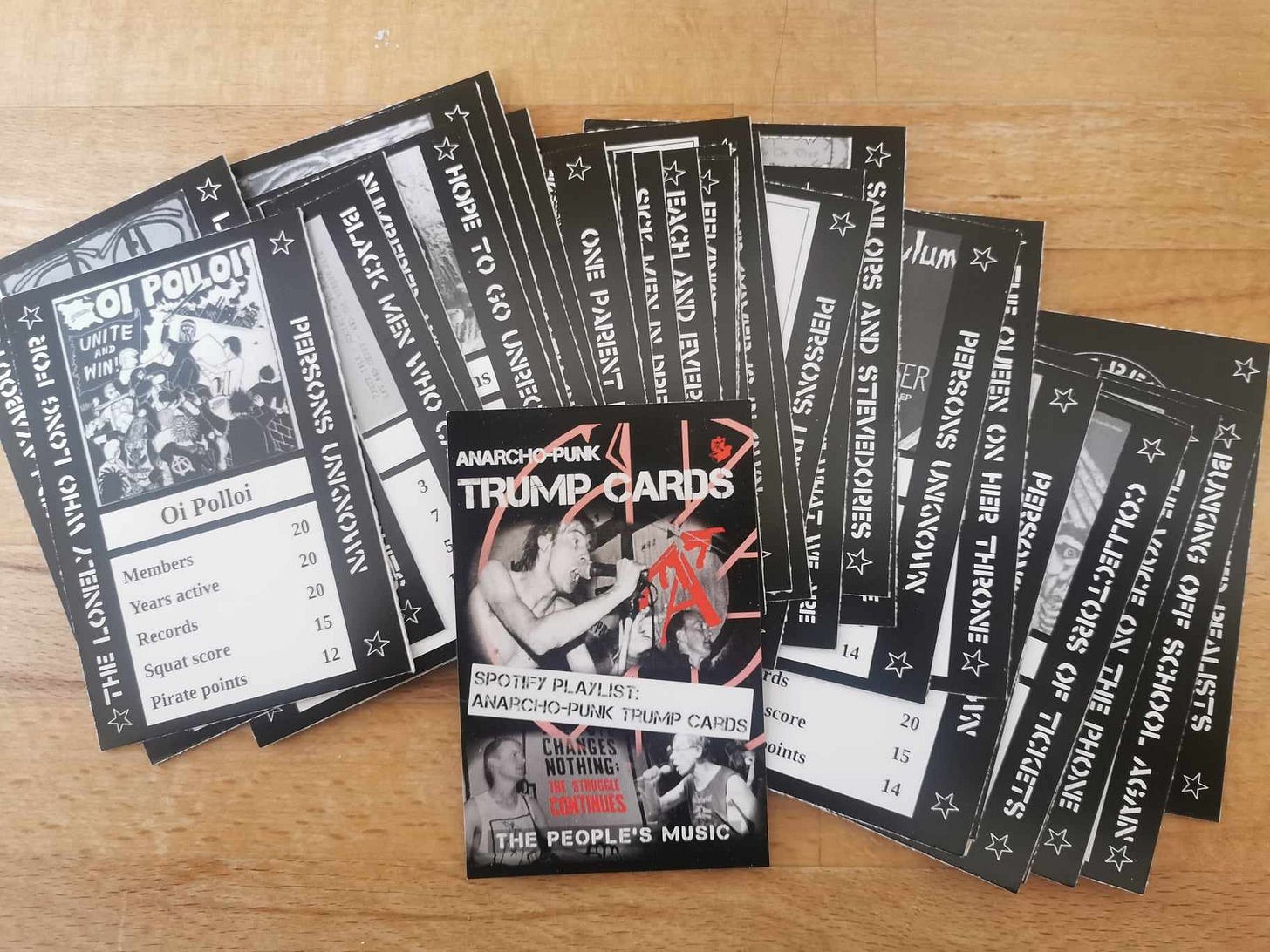
Great read Ian. I’m impressed by anyone taking part in hunt sabs.
I remember (and knew) people that we called crusties. I think they fit the crust punk description, but this was around mid 80s. A lot of them went on form the traveller movement later that decade.
I well remember that Lincoln van - they must have bought a batch of henna and had a night in doing their hair.